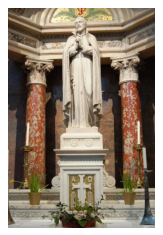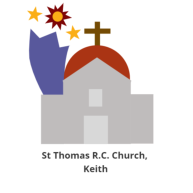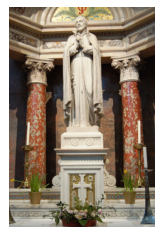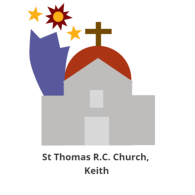
© Lorem ipsum dolor sit Nulla in mollit pariatur in, est ut dolor eu eiusmod lorem 2013
He headed for Edinburgh after Christmas, and after only a few weeks, in early 1614 he set out for
London on something of a mystery mission. One version is that he went to see King James himself. He
tells nothing about the purpose of his journey, but it so impressed the king that he
gave Father Ogilvie a safe conduct to France in order to further the scheme. The
King’s constant preoccupation was earning the loyalty of his Catholic subjects. And
he would dearly have wished to have the Pope accept him as a Protestant King.
Perhaps he saw Father Ogilvie as a vehicle for achieving this. But the priest’s
inability to deliver an assurance of loyalty had the effect later of making the King
more unrelenting towards him. On the 27
th
of March 1614 (Holy Thursday) Father
John arrived in Paris.
From France, Father Ogilvie returned to Scotland in June, 1614, disguised as horse
trader Watson, together with Father Moffat, who travelled under the name of
Haylburton, to continue his covert missionary work, mainly around Edinburgh,
Glasgow and Renfrewshire. He was in Edinburgh in August and is said even to have
penetrated Edinburgh Castle to comfort prisoners. He then returned to Glasgow and in September
went to the house of Mareon Walker near Stable Green, and later at Monkland met Sir James Cleland.
During his mission in Scotland, John Ogilvie wrote to Father Claud Aquaviva, General of the Jesuits, in
July, 1614:
“The harvest here is very great; the labourers here are very few. One of them, Fr Andrew Crichton, the
bearer of this (letter), long in chains for the faith, is leaving the country so as not to fall again into the
hands of the enemy, since he is (on account of his former captivity) too easily recognised, he would
expose to danger the noblemen to whom he had often to turn, and who took him with great
trepidation in their houses and hid him.”
"In my own country I am known to nobody, and am engaged day and night in more work than I can
cope with in any day. I, thanks be to God, do whatever I wish freely during the day in the open streets,
and by night, free of all suspicion, I go about the duties of my vocation...........”
But the net was closing in on Father John. He travelled to Glasgow to reconcile five men to the Church,
but one was a spy, Adam Boyd, who had contacted the Protestant Archbishop of Glasgow, John
Spottiswoode, an appointee of the King, and a trap was set. He was intercepted by Andrew Hay, a
servant of the Archbishop, and was taken to Hamilton House.
On October 14, 1614, Father John was arrested, imprisoned in the Archbishop’s palace, and appeared
before the burgh court of Glasgow. His accusers had found his vestments and altar furniture.
The judges were Archbishop John Spottiswoode, James Hamilton, Sir George Elphinstone, Sir Walter
Stewart, and Lords Fleming, Kilsyth and Boyd.
John Ogilvie’s nightmare was about to begin…
St John Ogilvie
Return to Homeland - Part Two



© Lorem ipsum dolor sit Nulla in mollit pariatur in, est ut dolor
eu eiusmod lorem 2013
He headed for Edinburgh after Christmas, and after only a few
weeks, in early 1614 he set out for London on something of a
mystery mission. One version is that he went to see King James
himself. He tells nothing about the purpose of his journey, but it
so impressed the king that he gave Father Ogilvie a safe conduct
to France in order to further the scheme. The King’s constant
preoccupation was earning the loyalty of his Catholic subjects.
And he would dearly have wished to have the Pope accept him as
a Protestant King. Perhaps he saw Father Ogilvie as a vehicle for
achieving this. But the priest’s inability to deliver an assurance of
loyalty had the effect later of making the King more unrelenting
towards him. On the 27
th
of March 1614 (Holy Thursday) Father
John arrived in Paris.
From France, Father Ogilvie returned to Scotland in June, 1614,
disguised as horse trader Watson, together with Father Moffat,
who travelled under the name of Haylburton, to continue his
covert missionary work, mainly around Edinburgh, Glasgow and
Renfrewshire. He was in Edinburgh in August and is said even to
have penetrated Edinburgh Castle to comfort prisoners. He then
returned to Glasgow and in September went to the house of
Mareon Walker near Stable Green, and later at Monkland met Sir
James Cleland.
During his mission in Scotland, John Ogilvie wrote to Father Claud
Aquaviva, General of the Jesuits, in July, 1614:
“The harvest here is very great; the labourers here are very few. One
of them, Fr Andrew Crichton, the bearer of this (letter), long in chains
for the faith, is leaving the country so as not to fall again into the
hands of the enemy, since he is (on account of his former captivity)
too easily recognised, he would expose to danger the noblemen to
whom he had often to turn, and who took him with great trepidation
in their houses and hid him.”
"In my own country I am known to nobody, and am engaged day and
night in more work than I can cope with in any day. I, thanks be to
God, do whatever I wish freely during the day in the open streets, and
by night, free of all suspicion, I go about the duties of my
vocation...........”
But the net was closing in on Father John. He travelled to Glasgow
to reconcile five men to the Church, but one was a spy, Adam
Boyd, who had contacted the Protestant Archbishop of Glasgow,
John Spottiswoode, an appointee of the King, and a trap was set.
He was intercepted by Andrew Hay, a servant of the Archbishop,
and was taken to Hamilton House.
On October 14, 1614, Father John was arrested, imprisoned in the
Archbishop’s palace, and appeared before the burgh court of
Glasgow. His accusers had found his vestments and altar
furniture.
The judges were Archbishop John Spottiswoode, James Hamilton,
Sir George Elphinstone, Sir Walter Stewart, and Lords Fleming,
Kilsyth and Boyd.
John Ogilvie’s nightmare was about to begin…

St John Ogilvie
Return to Homeland
Part Two





















